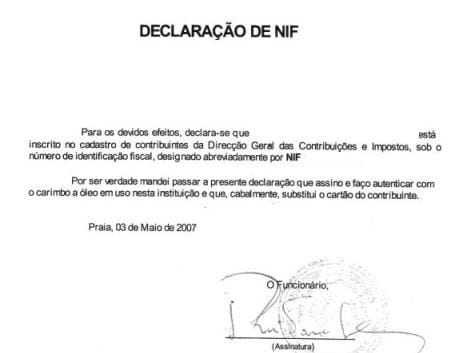

Employers must display working timesheets visible in the workplace, with copies submitted to the authorities 48 hours before implementation. These maps must include employee information, work duties, shifts, breaks and rest days. Schedule changes require 7 days' notice (3 days for micro-enterprises). Digital tools like Sesame HR can simplify compliance while increasing productivity. Effective schedules balance legal requirements with strategic shift planning around periods of maximum productivity. Proper implementation protects organisations from penalties while maximising productivity. operational efficiency.
Contents

Cape Verdean labour legislation establishes that the standard working day is limited to 44 hours a week, with a maximum of 8 hours a day. This limit is designed to ensure that workers have a healthy work-life balance. However, employers can extend the daily working day by up to an additional hour, as long as they offer workers an extra half-day of weekly rest as compensation. This provision is a measure aimed at making business operations more flexible without compromising workers' rights (General Directorate of Labour).
For young workers between the ages of 16 and 18, the Labour Code offers additional protection by reducing the weekly working day to 38 hours, with a daily maximum of 7 hours. This measure reflects the government's commitment to protecting the rights and well-being of young workers, ensuring that they have enough time for education and rest (Rivermate).
Overtime in Cape Verde is strictly regulated to prevent abuse and guarantee fair pay. The legislation allows a maximum of 2 hours of overtime per day and limits the total annual amount of overtime. Overtime must be paid at a rate of 50% on top of the normal working hour. This regulation aims to protect workers from exploitation and ensure that additional work is properly compensated (Lawyers in Cape Verde).
In addition, the law requires employers to keep detailed records of overtime worked. These records must be available for inspection by the competent authorities, guaranteeing transparency and compliance with labour regulations. This practice not only protects workers, but also helps companies avoid penalties for non-compliance with the rules.
Cape Verdean legislation guarantees workers the right to rest periods and breaks during the working day. After 6 consecutive hours of work, employees are entitled to a mandatory break of at least 30 minutes. This break can be split into two 15-minute breaks if there is mutual agreement between the employer and the worker.
In addition, all workers have the right to an uninterrupted weekly rest day, usually on Sundays. This rest is fundamental for workers' physical and mental recovery, contributing to their long-term productivity. The legislation also encourages employers to implement additional short breaks, depending on the nature of the work, to improve employees' well-being.
Workers in Cape Verde are entitled to an annual paid holiday period of at least 22 working days. This entitlement is proportional to the length of the employment contract, especially for contracts with a term of less than one year. The holiday period must be scheduled by mutual agreement between the employer and the employee. In the absence of an agreement, it is up to the employer to draw up the holiday schedule, consulting the union delegates or, failing that, the employee himself (General Directorate of Labour).
In addition to annual leave, Cape Verdean legislation guarantees specific leave, such as maternity leave of 60 days and paternity leave of 5 consecutive days. These leaves are designed to support workers at important moments in their personal lives, promoting a more inclusive and balanced working environment.
Although Cape Verdean legislation is quite clear about the standard working day, it also allows for some flexibility to meet the needs of companies and workers. Remote working, for example, has gained relevance in Cape Verde, especially after the COVID-19 pandemic. Although there is still no specific regulation for remote working in the Labour Code, many companies have adopted this practice as a way of increasing productivity and reducing operating costs.
Employers who opt for remote working must ensure that workers' rights are respected, including limits on working hours, mandatory breaks and overtime compensation. In addition, it is essential that companies provide the necessary resources so that workers can carry out their duties efficiently and safely.
The regulation of working hours in Cape Verde has a significant impact on the productivity and well-being of workers. Studies show that balanced working hours and regular breaks help to reduce stress and increase efficiency at work. In addition, the flexibility offered by the legislation, such as the possibility of remote working and overtime compensation, allows companies to adapt their operations to market demands without compromising workers' rights.
Companies that implement effective time management practices, respecting labour regulations, tend to have higher employee retention rates and higher levels of job satisfaction. On the other hand, failure to comply with regulations can result in legal penalties and negative impacts on the company's reputation.
In short, the regulation of working hours in Cape Verde is an example of how legislation can balance the needs of companies and workers, promoting a fairer and more productive labour environment.
O compliance with the rules It's not just about avoiding fines - it's fundamental to maintaining transparency in the workplace and operational efficiency.

Create a effective working hours requires adherence to legal requirements while incorporating critical elements of information. Organisations must include company identification, employee names with labour functions, detailed work shifts with break times, and weekly rest periods to meet regulatory compliance.
In addition to these legal requirements, well-designed schedules can incorporate productivity-boosting components, such as skill-matching considerations and balanced workload distribution, which benefit both employees and organisational efficiency. The implementation of process optimisation techniques can significantly reduce operating costs while improving employee satisfaction and the overall efficiency of the workflow.
Legal working hours must meet specific requirements to confirm compliance with labour laws and workplace regulations. Each work schedule must include the company name and department reference for proper organisation and clear identification of the scheme.
Employers must list all employees and their professional functions within the framework of the labour contractallowing for effective time management and accountability.
The normal working hours must specify start and end times, breaks and weekly rest periods as part of the daily work structure.
The timetable requires a signature from responsible for approval to validate its authenticity before it is visibly displayed in the workplace. This makes it easier to communication of changes transparent and confirms that all employees can report any discrepancies to workers, maintaining legal compliance while supporting productivity.
Each working timetable must incorporate five critical elements of information to satisfy legal requirements and operational clarity.
Properly structured working hours serve as a communication tool between employer and employees, guaranteeing transparency and operational efficiency.
The essential elements include:
Finally, the official approval by the signature of a responsible person validates the document and confirms its legal complianceThis protects both the organisation and its employees from potential labour disputes.
One working hours The well-designed system incorporates several components that increase productivity and go beyond mere legal compliance.
Effective working time documents prominently display the name of the company and department, creating organisational clarity and improving communication between teams.
The list of employees together with their specific functions establishes clear responsibility while allowing managers to distribute work equally among staff.
Properly documented shifts with precise start and end times, along with scheduled breaksThis helps to keep employees energised and focused throughout the working day.
Clearly marked weekly rest periods support the work-life balanceultimately contributing to greater productivity.
The approval signature, usually from a department manager, validates the work maps and ensures that the rules are followed.
This element of formal approval demonstrates the organisation's commitment to compliance, while reinforcing the importance of working hours in workplace operations.

When designing working time maps, organisations should prioritise the legal compliance with labour regulations concerning working hoursmandatory rest periods and days off.
An effective strategy involves balancing these requirements with considerations for the needs of the team, ensuring that both operational demands and employee well-being are addressed.
Companies must implement digital tools such as Sesame RH to simplify the creation and communication of schedules, making it easier to incorporate the employee availability while maintaining compliance with legal standards.
Understand the main contractual clauses related to working hours is essential for the proper development of schedules and to avoid future labour conflicts in Cape Verde.
Several legal obligations must be addressed before implementing any working time system in the workplace. O LABOUR MAP must thoroughly document all working arrangements and represent all categories of employees with adequate details about their working hours and rest breaks.
Employers must follow these essential requirements:
These requirements create working conditions transparent, while ensuring adequate communication to employees.
Ultimately, this supports productivity in the workplace through clear expectations and compliance with labour regulations.
Creating effective working time maps requires careful consideration of the diverse needs of the team while maintaining operational efficiency. When an employer develops work schedules, it must consider both business requirements and employee preferences in order to increase productivity.
| Strategy | Benefits |
|---|---|
| Assess availability | Improves job satisfaction |
| Include legal breaks | Improves employee well-being |
| Visibly display maps | Ensures legal compliance |
| Review regularly | Adapts to changing needs |
| Using software tools | Simplifies management |
The most successful working time maps balance operational needs with employees' work-life balance. Transparent communication of schedules promotes trust between team members and contributes to efficiency in the workplace. Regularly collecting feedback allows employers to identify opportunities for improvement, demonstrating respect for employees' working conditions. This collaborative approach not only ensures compliance with regulations, but also cultivates a more engaged workforce.
Transparent communication of working hours represents a legal obligation essential for employers in all industries.
The map must be registered with adequate visibility in the workplace, ensuring that everyone can see it. working hours are clearly displayed to employees. The communication of change of timetable must follow strict protocols, with a minimum of 7 days' notice for regular companies and 3 days for micro-businesses.
Legal compliance requires employers:
Failure to comply with these reporting requirements may result in significant administrative penaltiespotentially affecting operational efficiency and financial stability.
The right break management is a fundamental pillar of the productivity in the workplace and employee well-being in modern work environments.
After five continuous hours of working time, employees are entitled to a work breakThese breaks usually last between one and two hours, depending on the company's policy. For every additional two hours of work, employees should receive 10-minute breaks to support their well-being and maintain productivity.
Effective time managementPomodoro methods can optimise these rest periods by structuring short breaks that improve focus and creativity.
Employers must adhere to working rules regarding breaks to avoid penalties and guarantee employee satisfaction.
Regular rest periods are not merely operational requirements, but essential investments in the company. employee healthIn recent years, it has contributed to greater productivity in the workplace by reducing fatigue and improving concentration.
Implementing a structured system of breaks that aligns with your organisation's culture can significantly improve the employee motivation and reduce turnover rates in Cape Verdean companies.
As organisations seek to balance employee needs with operational requirements, the implementation of flexible working arrangements has become increasingly essential for productivity and satisfaction in the workplace.
When establishing flexible working, employers must maintain the compliance with the labour legislation while optimising operations. Working hours must accommodate both legal requirements and performance objectives.
The implementation of flexible compliant modalities requires:
The successful implementation of flexible working depends on proper documentation, timely consultation and clear communication protocols.
This balanced approach allows organisations to maintain legal compliance while allowing employees to work during their peak productivity periods, ultimately improving the overall effectiveness of the workplace.
Why do organisations often face penalties related to working time regulations despite having established policies? The most common offences occur when employers do not post the timetable map and neglect to send it to the authorities 48 hours before implementation.
In addition, the change of timetable without proper prior consultation with employees violates the requirements of the labour regime.
To avoid these problems, the employer must follow recommended practicesThe best way to do this is to ensure that you give timely notice of changes (7 days in advance for normal companies, 3 days for micro-companies), keep complete documentation of changes in working hours and establish communication protocols.
Respecting the conditions is paramount in workplace planning and not only prevents administrative sanctions as well as maintaining healthy relations between employer and employee.
Systematic adherence to working time regulations provides both legal protection and operational stability.
Numerous organisations have found that digital tools offer revolutionary solutions for managing working hours and compliance challenges.
Software such as Sesame RH allows timetable management while ensuring adherence to labour regulations. These digital platforms simplify the communication of changes to working hours within the established deadlines, improving transparency in the workplace.
The main benefits of digital tools for managing working hours include:
Strategic scheduling has emerged as a powerful approach for organisations looking to maximise productivity in the workplace while accommodating the needs of employees. By analysing patterns of maximum productivity, companies can implement flexible working hours that align with employees' natural energy cycles.
Techniques such as timeboxing and time mapping help workers concentrate on specific tasks during optimum periods, improving their performance. time management and productivity general.
Strategic time allocation methods boost focus during windows of maximum productivity, optimising workflow efficiency and performance results.
Regular revision of the timetable ensures compliance with the rules and benefits, encouraging job satisfaction. Transparent communication regarding schedule changes creates accountability and improves resource management.
Companies that consider labour conditions and incorporate employee preferences into programming decisions usually experience greater employee involvement and retention rates. This strategic approach transforms scheduling from a mere administrative task into a powerful tool for organisational success and employee well-being.
Working time regulations in Cape Verde reflect a careful balance between the rights of workers and the needs of companies. With a standard working week of 44 hours and clear limits on overtime, the legislation promotes a fair and productive labour environment. Measures such as reduced working hours for young workers and mandatory weekly breaks and rest breaks demonstrate the country's commitment to employee well-being. In addition, the flexibility allowed, such as remote working and overtime compensation, gives companies the opportunity to adapt their operations to market demands without compromising labour rights. The implementation of practices such as the digitisation of timesheets and the use of time management tools such as the Pomodoro Techniquecan further improve efficiency and job satisfaction.
Timesheets have emerged as an essential tool for the efficient management of time and human resources, especially in critical sectors such as tourism and industry. Their use makes it possible to identify periods of greatest demand, optimise the distribution of tasks and ensure compliance with labour regulations, such as limits on overtime and mandatory breaks. Digitising these maps, using software such as Sesame HRIn this way, it offers greater transparency and accessibility, promoting a more organised and productive work environment. Companies that invest in time management strategies and in adapting practices to local needs, such as the use of collaborative methodologies and incentives, not only increase productivity, but also improve talent retention and employee satisfaction.
In short, Cape Verde's labour legislation, combined with modern management strategies and technology, offers an effective model for balancing productivity and well-being. The next step for Cape Verdean companies is to deepen their adoption of digital tools and collaborative practices, ensuring that operations are not only efficient, but also sustainable and aligned with workers' needs.
Employers should establish working hours through workplace policies that balance legal requirements with employee preferences, incorporating flexible hours, remote working options and productivity techniques to optimise time management and work-life balance.
Organisations control working hours through time recording software, employee monitoring systems, digital calendars, productivity tools and flexible schedules that support work-life balance, while ensuring compliance with overtime regulations and facilitating effective time management.
Working hours encompass periods when employees perform duties or remain available to employers, governed by legal regulations while accommodating flexible hours, remote working, cultural differences and employee preferences to support work-life balance.







